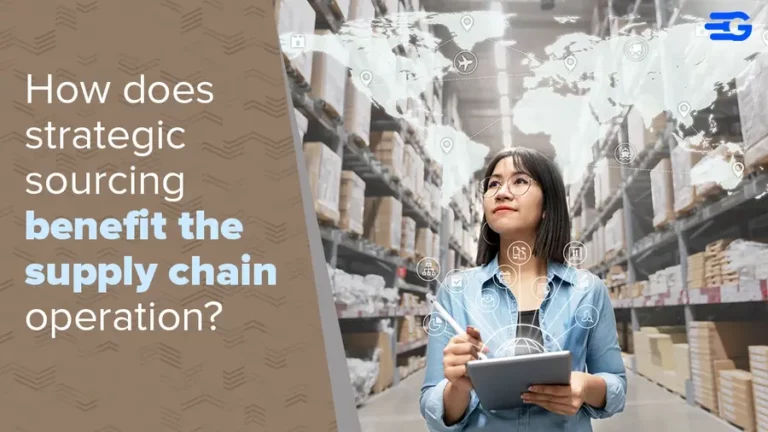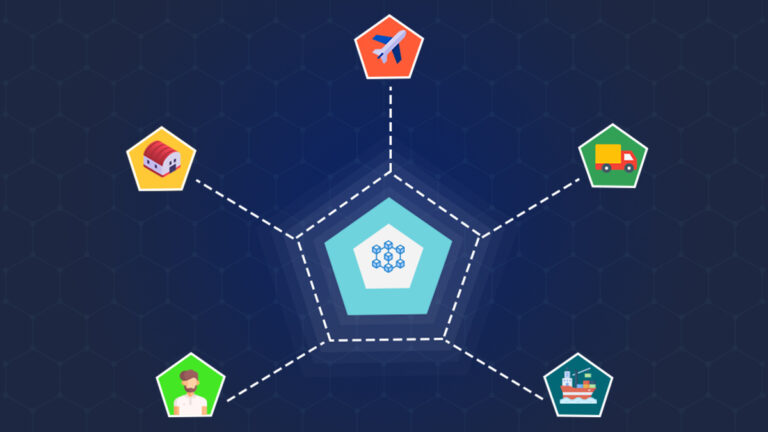Supplier Relationship Management (SRM): A Complete Guide for Modern Supply Chains
Table of Contents
The global marketplace is vastly interconnected at its core, and how you manage your supplier relationships can make or break your business. Supplier Relationship Management (SRM) has grown from a simple purchasing function to a strategic necessity that directly impacts your competitive advantage.
This guide covers everything you need to know about SRM, from basic concepts to practical implementation strategies that can improve your supply chain operations.
What Is Supplier Relationship Management (SRM)?
Supplier Relationship Management (SRM) is a systematic approach to evaluating, engaging with, and improving relationships with your suppliers to create maximum value and minimize risk. Unlike traditional procurement processes that focus mainly on transactions and costs, SRM takes a complete view of supplier interactions, considering factors like innovation potential, risk profiles, and long-term strategic alignment.
The SRM role involves coordinating all supplier-facing activities across your organization to ensure consistency, efficiency, and strategic alignment. This includes everything from supplier selection and onboarding to performance evaluation, collaboration on product development, and conflict resolution.
Modern SRM extends beyond the purchasing department, requiring teamwork between procurement, operations, finance, quality assurance, and executive leadership. The goal is to change supplier relationships from transactional exchanges into strategic partnerships that deliver mutual benefits and competitive advantages.
Why Is Supplier Relationship Management Important for Businesses?
Effective SRM is essential in today’s complex business environment. Here’s why investing in supplier relationship management makes strategic sense:
- Risk Reduction: By developing close relationships with key suppliers, you gain visibility into potential disruptions before they affect your operations. This early-warning system proved valuable during recent global supply chain crises.
- Cost Savings: Beyond simple price negotiations, strategic SRM helps identify opportunities for process improvements, inventory optimization, and elimination of redundancies that reduce the total cost of ownership.
- Innovation Acceleration: Your suppliers often have specialized expertise and market insights. Strong relationships encourage them to share innovations, suggest improvements, and collaborate on new product development.
- Quality Improvement: Close supplier partnerships facilitate a better understanding of specifications, joint quality planning, and collaborative problem-solving that enhances product quality.
- Competitive Advantage: When you become a “customer of choice” for strategic suppliers, you gain preferential treatment during shortages, access to their best resources, and first look at new technologies.
- Sustainability Goals: Strong supplier relationships make it easier to implement and monitor ethical sourcing, carbon footprint reduction, and other sustainability initiatives throughout your supply chain.
Companies that excel at SRM typically achieve 2-3% cost savings annually, 20-30% reduction in supply disruptions, and significantly faster time-to-market for new products compared to their competitors.
Traditional vs. Modern Approaches to SRM
The evolution of supplier relationship management reflects broader changes in business thinking and technology capabilities:
Traditional SRM Approach
- Transaction-focused: Emphasis on purchase price and contract terms
- Adversarial negotiations: A zero-sum mindset where the buyer wins only if supplier loses
- Limited information sharing: Restricted to immediate transaction needs
- Reactive problem solving: Addressing issues after they occur
- Manual processes: Paper-based, labor-intensive tracking and communication
- Department-specific: Managed exclusively by the procurement team
Modern SRM Approach
- Relationship-focused: Emphasis on total value and strategic alignment
- Collaborative partnerships: Win-win mindset seeking mutual benefits
- Extensive information sharing: Open exchange of forecasts, capabilities, and challenges
- Proactive risk management: Identifying and addressing potential issues before they impact operations
- Digital integration: Cloud-based platforms enabling real-time visibility and analytics
- Enterprise-wide: Cross-functional engagement including operations, R&D, and executive sponsorship
This shift is more than just changing terminology. It’s a fundamental rethinking of how businesses interact with their supply base. Modern SRM strategies recognize suppliers as extensions of your own organization rather than external entities to be managed at arm’s length.
Key Components of an Effective SRM Strategy
A complete supplier relationship management strategy includes several connected elements:
1. Supplier Segmentation
Not all suppliers deserve the same level of attention and resources. Effective segmentation categorizes suppliers based on:
- Strategic importance to your business
- Annual spend volume
- Supply market complexity and risk
- Innovation potential
- Growth alignment
This segmentation helps determine the appropriate relationship model and resource allocation for each supplier category.
2. Performance Measurement
Establishing clear KPIs and regular supplier evaluations creates accountability and identifies improvement opportunities. Effective metrics typically include:
- On-time delivery rate
- Quality conformance
- Cost management
- Responsiveness
- Innovation contribution
- Sustainability compliance
Modern SRM systems automate data collection and generate useful insights through customizable dashboards.
3. Relationship Development
Building strong relationships requires intentional effort beyond transactions:
- Regular business reviews with key suppliers
- Executive sponsorship programs
- Joint improvement initiatives
- Recognition and rewards for exceptional performance
- Conflict resolution mechanisms
- Cultural alignment activities
These relationship-building activities create the foundation for trust and collaboration essential to strategic partnerships.
4. Risk Management
Proactive identification and mitigation of supply chain risks:
- Supply continuity planning
- Financial stability monitoring
- Geopolitical risk assessment
- Compliance verification
- Cyber security protocols
- Disaster recovery capabilities
The best SRM strategies use predictive analytics to identify emerging risks before they disrupt operations.
5. Innovation Management
Structured processes to capture supplier-driven innovations:
- Innovation portals and submission systems
- Joint development agreements
- Early supplier involvement in product design
- Technology roadmap sharing
- Innovation-focused supplier events
Companies with mature SRM programs often attribute 20-30% of their innovation pipeline to supplier contributions.
Step-by-Step Guide to Implementing SRM in Your Organization
Implementing an effective supplier relationship management program requires systematic effort. Follow these sequential steps for successful deployment:
Step 1: Secure Executive Sponsorship
Begin by obtaining a C-suite commitment to SRM as a strategic priority. Document expected benefits, resource requirements, and alignment with corporate objectives. Identify an executive champion who will remove obstacles and ensure cross-functional participation.
Step 2: Assess Current State
Evaluate your existing supplier management practices:
- Map current supplier interactions across departments
- Document existing tools and processes
- Identify pain points and opportunity areas
- Benchmark against industry best practices
- Survey key stakeholders on current effectiveness
This assessment establishes your baseline and helps prioritize improvement areas.
Step 3: Define Your SRM Framework
Develop a customized plan appropriate for your organization:
- Create a clear SRM vision and objectives
- Design your supplier segmentation model
- Define relationship models for each segment
- Establish performance metrics and evaluation processes
- Document roles and responsibilities across functions
This plan becomes your blueprint for implementation.
Step 4: Select Technology Enablers
Identify and implement appropriate digital tools:
- Supplier information management systems
- Performance analytics dashboards
- Collaboration platforms
- Risk monitoring tools
- Integration with existing ERP and procurement systems
The right technology stack will automate routine tasks and provide data-driven insights.
Step 5: Develop Internal Capabilities
Prepare your team to execute the SRM strategy:
- Train staff on relationship management techniques
- Develop negotiation and conflict resolution skills
- Build analytical capabilities for performance evaluation
- Create cross-functional collaboration mechanisms
- Establish change management processes
Investment in people is just as important as processes and technology.
Step 6: Pilot With Selected Suppliers
Start with a manageable subset of strategic suppliers:
- Select 3-5 key relationships for initial implementation
- Communicate the new approach and expectations
- Implement the full relationship model
- Measure results against baseline
- Document lessons learned and refine the approach
This pilot phase provides proof of concept and builds momentum.
Step 7: Scale and Institutionalize
Expand the program across your supply base:
- Roll out to additional supplier segments
- Integrate SRM into standard business processes
- Develop formal governance procedures
- Create continuous improvement mechanisms
- Celebrate and publicize early wins
Successful scaling requires balancing ambitious expansion with realistic resource constraints.
Common Supplier Relationship Management Challenges & How to Overcome Them
Even well-designed SRM initiatives face obstacles. Here are common challenges and practical solutions:
1. Inconsistent Cross-Functional Engagement
When different departments interact with suppliers independently, they create confusion and missed opportunities.
Solution: Create a supplier relationship governance structure with clear roles, regular cross-functional supplier councils, and shared performance metrics that align departmental objectives.
2. Inadequate Data and Visibility
Many organizations lack complete, accurate supplier information needed for effective decision-making.
Solution: Implement a centralized supplier information management system with automated data collection, validation protocols, and performance dashboards accessible to all stakeholders.
3. Resource Constraints
Procurement teams often lack sufficient resources to manage relationships beyond transactional activities.
Solution: Use segmentation to focus resources on high-impact suppliers, leverage technology for routine interactions, and distribute relationship management responsibilities across functions based on expertise.
4. Supplier Resistance
Some suppliers may view SRM initiatives with skepticism or resist increased transparency requirements.
Solution: Clearly communicate mutual benefits, start with non-threatening collaboration areas, demonstrate early wins, and consider supplier incentives for participation.
5. Measuring ROI
Quantifying the return on SRM investments can be challenging, especially for soft benefits like risk reduction.
Solution: Establish baseline metrics before implementation, track both hard savings (cost reduction, inventory optimization) and soft benefits (innovation contributions, risk avoidance), and use case studies to document value creation.
6. Sustaining Momentum
Many SRM programs start strong but lose energy as priorities shift and champions move on.
Solution: Build SRM objectives into performance evaluations, celebrate and publicize successes, maintain executive sponsorship, and continuously refresh the program with new initiatives and goals.
Addressing these challenges requires persistence and creativity, but the potential rewards make the effort worthwhile.
How Businesses Are Optimizing SRM with Digital Solutions
These real-world supplier relationship management examples demonstrate the potential of modern SRM approaches:
Manufacturing Sector: Global Automotive Supplier
This Tier-1 automotive component manufacturer implemented a complete SRM program focused on their top 50 suppliers, representing 80% of their spend. Key elements included:
- Quarterly business reviews with two-way performance scorecards
- Joint cost reduction teams targeting 3% annual savings
- Early supplier involvement in new product development
- Digital collaboration platform for real-time issue resolution
Results: After 18 months, they achieved 4.2% cost reduction, 35% decrease in quality issues, and 60% faster resolution of supply disruptions. Three supplier-suggested innovations were incorporated into new products, creating $12M in incremental revenue.
Retail Sector: Fashion Retailer
This fast-fashion retailer faced significant challenges with supply chain transparency and ethical sourcing. Their SRM transformation included:
- Cloud-based supplier portal for real-time collaboration
- Blockchain-enabled traceability from raw materials to finished goods
- Supplier development programs focused on sustainability certification
- Shared forecasting and inventory visibility systems
Results: Lead times decreased by 22%, in-stock positions improved by 15%, and the company achieved full supply chain visibility for 85% of products. Customer satisfaction scores related to ethical sourcing improved by 30%.
Healthcare Sector: Medical Device Manufacturer
These healthcare companies like EHR and small practice EMR vendors needed to ensure supply stability while meeting strict regulatory requirements. Their SRM approach featured:
- Risk-based supplier segmentation updated quarterly
- Virtual supplier innovation summits
- Joint business continuity planning
- Automated compliance documentation management
- AI-powered performance analytics
Results: Regulatory compliance issues decreased by 48%, supply disruptions were reduced by 67%, and supplier-initiated improvements generated $8.5M in annual savings. New product introduction cycleshave been shortened by 35%.
These examples illustrate that successful SRM implementation requires tailoring approaches to industry-specific challenges while leveraging digital capabilities to enable collaboration and visibility.
How First Philec Strengthened Supplier Relationships with Us
Managing supplier relationships is critical for smooth logistics, but without visibility, coordination becomes a challenge. First Philec struggled with manual shipment tracking, leading to delays, high detention and demurrage (D&D) charges, and misalignment with suppliers due to time zone differences. Without real-time updates, both First Philec and its suppliers faced uncertainty, operational inefficiencies, and unexpected costs.
By integrating our GoTrack solution, First Philec gained real-time shipment visibility through a single dashboard. Suppliers now receive precise tracking updates at every stage, allowing them to plan better, reduce delays, and maintain a more efficient supply chain. This transparency has strengthened communication and trust, ensuring both parties can collaborate seamlessly.
One major improvement was the reduction in D&D charges. Previously, unclear tracking caused shipments to sit at ports longer than necessary, leading to penalties. With GoComet, First Philec and its suppliers now have accurate insights, allowing them to optimize deliveries, cut unnecessary costs, and enhance overall efficiency.
Additionally, our carbon emission tracking feature helps First Philec and its suppliers meet sustainability goals. By optimizing shipping routes, they’ve reduced emissions and transportation costs, fostering a responsible and long-term partnership built on shared environmental commitments.
“Before GoComet, tracking was slow and disjointed, making it hard to align with suppliers,” said Alicia Firmeza, Vice President of Enterprise Service at First Philec. “Now, we have full visibility, allowing us to coordinate effectively, reduce costs, and ensure on-time deliveries. It has completely changed how we work with our suppliers.”
With our technology, First Philec has transformed its supplier relationships, improving communication, reducing costs, and ensuring efficient, sustainable operations.
How We Enhance Supplier Relationship Management with Technology
Modern SRM strategies are increasingly technology-enabled, and platforms like GoComet offer specialized capabilities that improve supplier relationships. We provide several key advantages for organizations seeking to optimize their supplier relationship management:
Centralized Supplier Information
GoComet creates a single source of truth for all supplier data, including:
- Performance histories and trend analytics
- Compliance documentation and certifications
- Risk profiles and mitigation plans
- Collaboration histories and relationship notes
This centralization eliminates information silos and ensures all stakeholders work from consistent, up-to-date supplier information.
Real-Time Performance Analytics
The platform’s analytics engine transforms raw data into actionable insights:
- Customizable KPI dashboards for different stakeholder needs
- Automated performance scoring and benchmarking
- Early warning indicators for potential disruptions
- Opportunity identification for improvement initiatives
These analytics capabilities enable data-driven decision-making and proactive relationship management.
Collaborative Communication Tools
GoComet facilitates seamless supplier engagement through:
- Secure document sharing and version control
- Structured communication workflows for issue resolution
- Automated alerts and notifications
- Virtual meeting management and recording
These tools create transparency and accountability while streamlining interactions.
Risk Monitoring and Mitigation
The platform’s risk management functionality includes:
- Continuous monitoring of supplier financial health
- Geopolitical and environmental risk tracking
- Automated compliance verification
- Scenario planning and contingency management
This proactive approach helps prevent disruptions rather than simply responding to them.
Integration Capabilities
GoComet connects with existing enterprise systems:
- Bidirectional ERP integration
- Procurement system connections
- Quality management system interfaces
- Financial system coordination
This integration eliminates duplicate data entry and provides end-to-end visibility across processes.
Organizations implementing our technology-enabled SRM approach typically report 15-20% improvement in supplier performance, 25-30% reduction in manual effort, and 3-5% total cost savings within the first year of adoption.
By combining strategic SRM principles with purpose-built technology, businesses can transform supplier relationships from potential vulnerabilities into powerful competitive advantages. In today’s uncertain business environment, this transformation isn’t just beneficial, it’s essential for survival and success.






